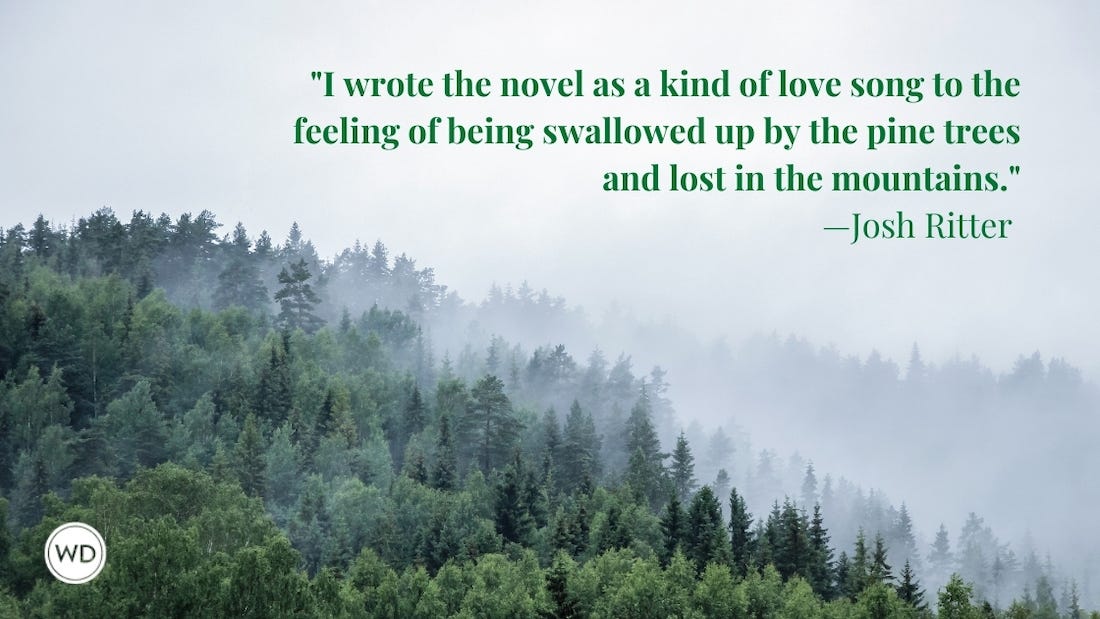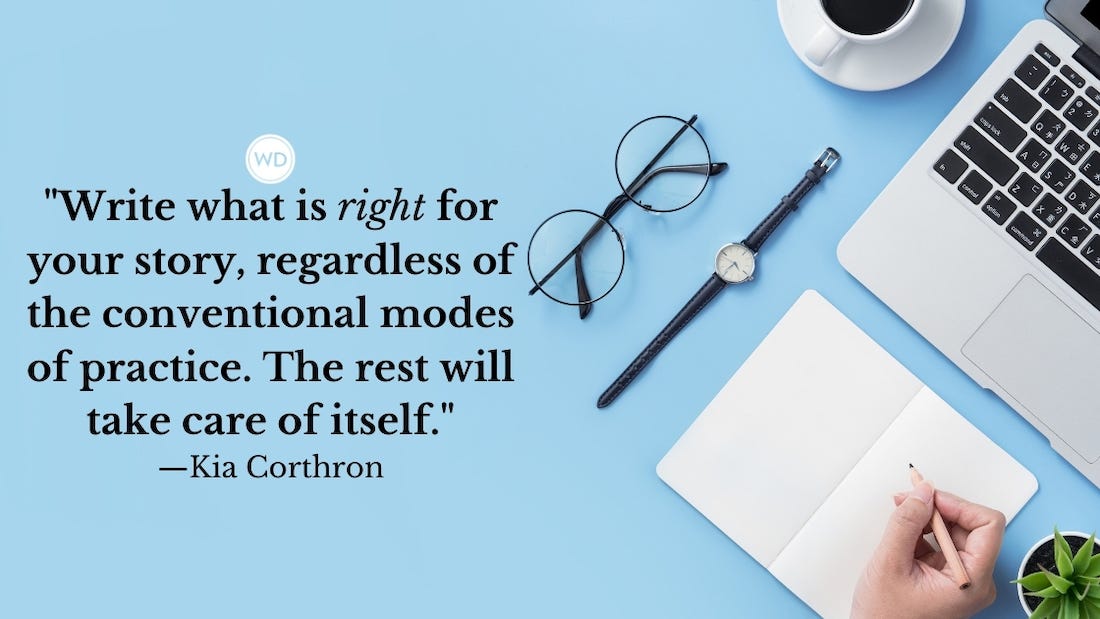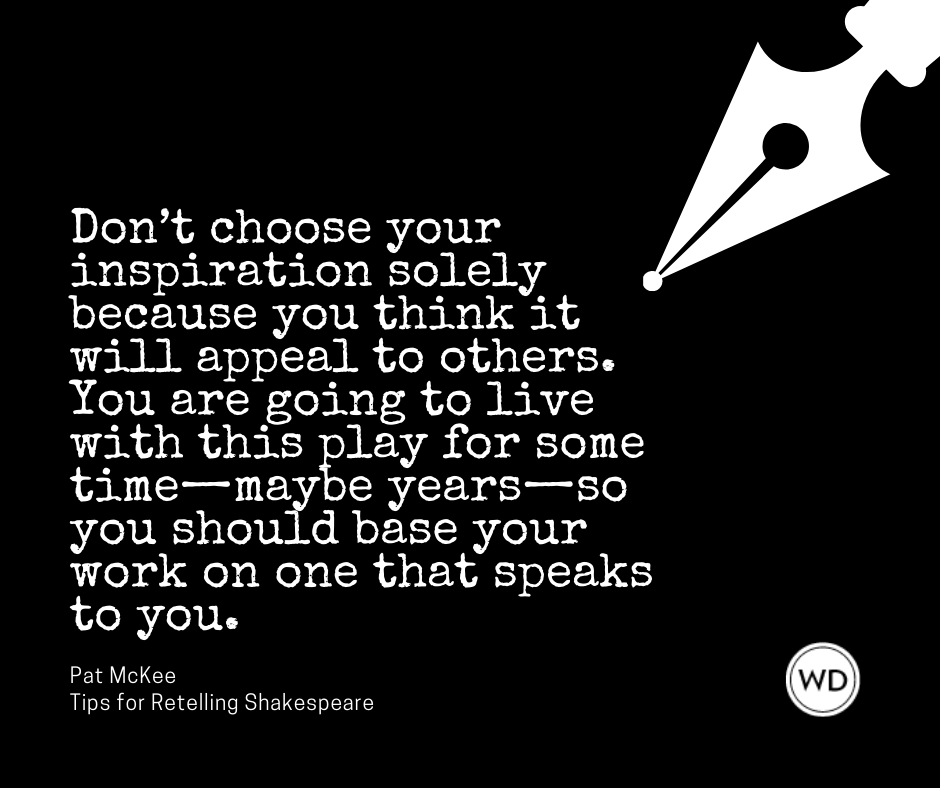The WD Interview: Sara Gruen
It’s hard to say which came first for author Sara Gruen—the animals or the writing, both of which have been in her life for as long as she can remember. While she spends much of the time in her North Carolina home with a menagerie of real animals (not to mention her husband and three children), it’s her fictional ones that have inspired her writing career.
It’s hard to say which came first for author Sara Gruen—the animals or the writing, both of which have been in her life for as long as she can remember. While she spends much of the time in her North Carolina home with a menagerie of real animals (not to mention her husband and three children), it’s her fictional ones that have inspired her writing career.
First came the horses in her debut novel, Riding Lessons, and its sequel, Flying Changes. The books propelled her from technical writer to published novelist. Then came Rosie, the abused circus elephant that stars in Gruen’s third novel, Water for Elephants, about the Benzini Brothers Most Spectacular Show on Earth and set in the 1920s. This under-explored slice of Americana captured the public’s fascination, driving the novel to the No. 1 slot on The New York Times bestseller list for months. And when the book came out in paperback, it stole that slot once more.
Now Gruen is writing her fourth novel, Ape House, about language-proficient bonobo apes at the center of a media storm. Gruen is entranced by the bonobos’ non-violent social structure and their uncannily human emotions.
Despite the demands of her writing career and family life, Gruen is generous with her time, and cheerful to the point where you might call her an optimist. With the kind of beauty of a well-bred Victorian lady—fine bones, pale skin and thick, dark hair—Gruen is the kind of person you might say has everything. Her spirit of caring for and writing about animals is just a part of her nature.
Read on to find out what Gruen has to say about novel research, her intense revision process and how she makes animals bonafide characters.
WHAT WAS IT LIKE TO HAVE WATER FOR ELEPHANTS BECOME SUCH A RUNAWAY HIT?
I continue to be surprised. You work hard on a book and throw it out there and then it’s beyond your control. I don’t know what makes one book fly and another not. It’s all very mysterious. I’m always looking over my shoulder thinking, Is it real? I don’t know if you ever get over that.
HAVE YOU BEEN WRITING FICTION FOR VERY LONG?
I started writing fiction six years ago. I got laid off from my job as a technical writer and was moping around and getting my résumé together. I didn’t want to work in a cubicle again. My husband and I decided we’d take a risk: two years and two books. If I didn’t replace my salary by then I’d go back to writing software manuals.
HOW DID YOU PICK UP THE SKILLS OF THE CRAFT SO QUICKLY?
My degree is in literature, but I didn’t have a chance to practice it. Instead I managed to parlay that into technical writing, which I enjoyed. It’s something that most people say “eww” to but I found it interesting. My husband and I had talked about my retiring early to try writing a novel. But when two-thirds of my division got laid off, we held hands and jumped off the bridge together.
AND THE RISK PAID OFF.
Yes, though there were some hairy years. I had to give up daycare and work in my apartment office with a baby gate.
DID YOU REALLY, AS RUMOR HAS IT, LOCK YOURSELF IN A CLOSET TO FINISH WATER FOR ELEPHANTS?
I did. I needed an Internet-deprivation pod because I’m very good at writing-avoidance techniques.
SO LET’S TALK ABOUT YOUR PENCHANT FOR WRITING ABOUT ANIMALS, INCLUDING HORSES, CIRCUS ELEPHANTS AND BONOBO APES. WHERE DOES THIS AFFINITY COME FROM?
It’s not a conscious decision. It seems natural to surround my fictional world with animals because my reality is full of them. When I’m sitting there conceiving a story, they just pop up.
WHAT ANIMALS LIVE WITH YOU?
Three goats that I’m boarding, two horses, four cats and two dogs. I’m feeling the need for a miniature donkey—I’ve got these great horses and an extra stall so I’m going to go check them out.
YOUR LOVE OF ANIMALS IS APPARENT IN YOUR CHARACTER ROSIE, THE ELEPHANT IN WATER FOR ELEPHANTS. SHE’S AS VIVID AS YOUR HUMAN CHARACTERS.
In my opinion Rosie’s the star of the book and certainly my favorite character. I actually had postpartum depression when the book was done. I had an elephant in my life for eight months and then I didn’t. The book contains some difficult scenes that were hard for me to write, and I had to remind myself that I made her up.
YOU CLEARLY TAKE YOUR CHARACTERS VERY SERIOUSLY.
It’s frightening when I think about the different characters I’m writing about at any given moment. I always have to remind myself they’re all in my head—not real.
With Water for Elephants, I spent four-and-a-half months researching [circus life] full time because it was such an entirely foreign world to me. I had no contact or connection to the circus. It’s a very different world and I wanted to record it in a faithful fashion, not vilify or glamorize it.
THERE’S A KIND OF SEEDINESS THAT’S ASSOCIATED WITH CIRCUSES, BUT YOU DIDN’T FOCUS ON THAT DARKER UNDERBELLY.
I decided not to focus on freaks. That’s not where I wanted to go. What fascinated me were the logistics—moving a city, 50 miles every day. That’s logistically amazing. I’m not sure anyone could recreate that now. It was such a well-oiled machine, even if a seedy one.
WHAT SURPRISED YOU THE MOST IN DOING YOUR RESEARCH FOR THE BOOK?
The first thing that hit me was the concept of red lighting—you could be fired by being thrown off the back end of a moving train. [The circus is] a setting in which anything can happen. That’s why I wanted to include actual photographs in the book. Otherwise, people wouldn’t have believed some of the things I described.
DID YOU KNOW RIGHT AWAY WHOSE STORY IT WAS GOING TO BE?
Yes. I didn’t think about story until I’d done a fair amount of research into the backdrops, but then it was clear. So many of the stories were about elephants, so I knew that would be a big part of the book. When I sat down to write, I realized it had to be from this old man’s point of view and it felt like he was just waiting in my head wanting to come out.
WATER FOR ELEPHANTS SEEMS TO DEFY GENRE. IT’S BEEN DUBBED A HISTORICAL ROMANCE, A SUSPENSE NOVEL AND LITERARY FICTION. WHAT DO YOU THINK OF THESE DESCRIPTIONS?
One of the publishers who rejected it referred to it as a historical romance, which I couldn’t understand. It’s not that I hate genre books, but I don’t want to be pigeonholed. After Riding Lessons my work was being called women’s fiction, I guess because I’m a woman and the main character is a woman. Water for Elephants has been described in a lot of ways and maybe they’re all true, but none are exclusive.
YOUR WORK SHEDS EMPATHY AND LIGHT ON LITTLE-KNOWN SUBJECTS. IS THAT INTENTIONAL?
I do try. I knew ahead of time with Water for Elephants that I was going to discuss the Jamaica ginger paralysis issue, which devastated many people in 1931, and yet I’d never heard of it until it came up in my research. I thought, if I can help put this kind of thing on the radar, that’s great. I don’t want my stories to be history lessons or moralistic, but if I can include some information that’s interesting and historically significant, then it’s a good thing.
WATER FOR ELEPHANTS HAS SOLD A FILM OPTION. THIS MUST BE EXCITING.
Yes, Andrew Tennenbaum, who did the The Bourne Identity, is doing it. I have to temper my joy with reality because just two percent of films that get optioned are made into movies. Like so many things in this industry, it can just go poof.
HAVE YOU THOUGHT ABOUT WHAT ACTORS YOU’D LIKE TO PLAY ANY OF YOUR CHARACTERS?
I do have a very strong vision in my head of how these people look and behave. I’d love to see Scarlett Johansson as Marlena, and Jim Carrey would make a great August. Danny DeVito would make a great Uncle Al.
TELL US ABOUT THE NEXT NOVEL YOU’RE WORKING ON, APE HOUSE.
It’s about language-proficient bonobos. They end up at the center of a media storm, in their own reality TV show. It’s a look at tabloid journalism and some aspects of our modern life. In real life the media is overly interested in the sexual behavior of bonobos, but the real story is this family of apes that have been uprooted and the people who love them, and the menagerie of people behaving badly on the outside. The apes are the most civilized characters in the book.
DID YOU GET TO MEET BONOBOS IN PERSON WHILE RESEARCHING THEM?
Yes. I spent an afternoon at the Great Ape Trust with apes that know human language and it was a life-changing, almost religious experience. They’re wonderful and apparently they loved me. They asked the next day, “Where’s Sara? Build her nest. When is she coming back?” I just wanted to die of happiness. They wanted me back and they wanted my bed ready.
WHAT EXACTLY DOES IT MEAN FOR THESE APES TO BE LANGUAGE PROFICIENT?
The ones I met have grown up in a bi-cultural setting, apes and humans. The apes are acquiring language in the same manner that human children do, through exposure and wanting to express and understand. These apes have sentence structure and grammar. I was lucky to get a private meeting with them. One ape, Pam, had two sons, and I took in a picture of my children in a bubble bath. She went to her lexicon board and said, “babies washing bubbles.” There’s the language aspect of that but also the recognition of what’s going on in the photo. You can’t look a great ape in the eye and feel the same way about life again.
WHAT MAKES APES SO COMPELLING?
What’s not to love? They’re our closest cousins, and every one of them is endangered. Gorillas are in danger of being wiped out by the Ebola virus. I feel like we have limited time to get to know them and understand them and they’re going to disappear—that’s terrifically sad. Wouldn’t it be great if we could stop that?
WHEN YOU WRITE A BOOK, WHAT’S YOUR PROCESS LIKE?
I don’t like outlining, because books are organic things. Sometimes a book doesn’t want to be written in a certain way. I structure my time. I get up and put in a full day’s work. Sometimes I get almost nothing done, and sometimes I get a lot of work done. It’s just being there at my desk even if I do nothing but look at my file all day.
DO YOU UNDERTAKE MUCH REVISION OF YOUR BOOKS?
I edit things until they’re ripped from my clawed fingers. I usually write from word one all the way through—my sloppy spaghetti first draft. Then I do a couple of passes on screen until I’ve got the major surgery out of the way. Once I’m sure everything is where it’s going to be, I print out 50 pages at a time. I’m kind of OCD about it. I sit there with a pen and put in changes and print out those same 50 pages again until I have only one change per page left. Sometimes it’s 17 drafts, or if I’m really lucky it’s only four. In this day and age you have to be print ready.
LET ME GUESS—YOU BRING A PEN WITH YOU TO READINGS?
I can’t look at my books after they’re published because I want to change them. [The book I bring to readings] is all marked up with pencil, because what I read isn’t exactly what’s on the page anymore. I can’t help it.
DO YOU HAVE ADVICE FOR ASPIRING WRITERS?
I think the hardest part is getting a draft finished. It’s important to stop thinking about writing and just write. It’s something I grapple with every day—stop thinking, start writing. [WD]








